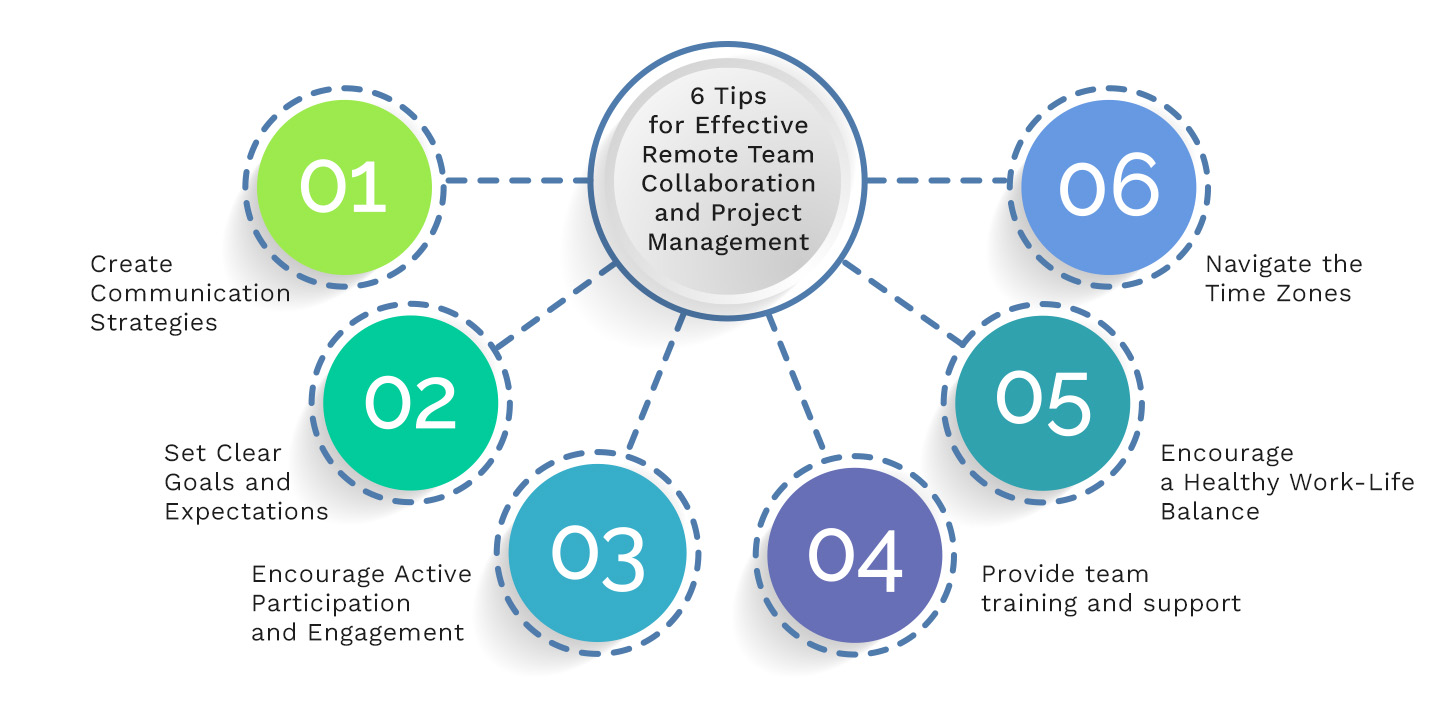Remote teams have become a staple in the last few years. Instead of the old-fashioned office, many people now work from different locations. It's important to learn how to work together effectively from afar. The key to success for remote teams is staying connected, even when you're not in the same place.
We'll buid your first application for you. At no extra cost.
Let us build your first business application for free. Go from an idea to an application in under 2 weeks.

Understanding the Importance of Remote Team Collaboration
Connecting team members across cities, countries, and continents can improve productivity and foster innovation. When collaboration is done right, remote teams can leverage diverse perspectives, optimize resources, and maintain workflow continuity regardless of their location.
Effective collaboration ensures ideas and contributions can intermingle and grow even when team members aren’t in the same physical space. Effective remote collaboration improves the quality of work and strengthens team dynamics, creating an environment where each member feels valued and heard.
However, misunderstandings can easily arise without the non-verbal cues present in face-to-face interactions. That’s why knowing how to overcome communication barriers is vital.
6 Tips for Effective Remote Team Collaboration and Project Management
Here are six simple yet powerful tips to help you navigate remote team collaboration and project management successfully.
1. Create Communication Strategies
Creating a communication strategy for your remote team helps keep everyone connected. Firstly, encourage regular check-ins, in the form of daily sync-ups or weekly deep dives. These touchpoints are your chance to align on tasks and address any concerns. Implement a blend of synchronous and asynchronous communication to cater to different needs and time zones.
Leverage tools such as video conferencing for face-to-face meetings to foster a sense of connection. Use instant messaging for quick questions and updates, and project management platforms for sharing progress on tasks. Establish which channels are suitable for different communication types to avoid confusion.
Also, provide clear instructions and feedback. Setting clear deliverables, availability, and deadlines reduces the chances of misunderstanding while at the same time increasing productivity. Statistics reveal that 86% of workers and executives blame poor collaboration and communication for workplace failures. On the other hand, teams that communicate well can increase productivity by up to 25%.
2. Set Clear Goals and Expectations
When your team understands the goals and expectations, they can navigate their daily tasks intentionally and purposefully. Setting clear goals involves defining what needs to be accomplished but also creating a roadmap of how to get there.
Start by outlining what each person is responsible for and when they should achieve it. Use SMART (Specific, Measurable, Achievable, Relevant, and Time-bound) goals as a guideline to ensure each objective is well-defined and attainable. Be transparent about what success looks like for each project and how it contributes to the bigger picture.
Revisit and update these goals regularly to stay aligned with changing strategies or priorities. Implementing project management tools can help track these milestones and each project's progress.
Also, ensure that everyone is held accountable for their contributions. This isn't about micromanagement but fostering an environment where everyone feels responsible for their work. Communicating expectations upfront reduces the ambiguity and confusion that can often occur among remote team members.
3. Encourage Active Participation and Engagement
Encouraging active participation and engagement will make each team member feel like a part of the group, despite being in different locations. A study by Gallup found that increasing employee engagement could raise productivity by 18% and profitability by 23%.
Start by inviting and valuing feedback from your team. Ensure that their insights are welcome and necessary for the team's progress. Use interactive sessions such as brainstorming meetings where everyone can contribute, and consider using collaboration tools that allow real-time feedback and idea-sharing.
Recognize and celebrate contributions from all team members. Recognizing achievements increases motivation and reinforces the value of each member's participation. Also, provide opportunities for team members to lead initiatives or projects. This shows trust in their abilities and gives them a platform to showcase their leadership skills.
Promote a culture where team members are encouraged to share about themselves beyond work. Foster the social bonds that make collaboration more personal and effective. A remote 'coffee break' or 'virtual team-building event' are some ways to do this.
4. Provide team training and support
Remote workers rely heavily on digital tools, so your team needs to know how to use these tech tools well. Start with comprehensive training sessions covering the basic and advanced features of your team's tools and platforms. Don't forget to provide documentation and resources to refer to as they navigate these tools in their day-to-day tasks.
Offer continuous learning opportunities, especially when updates or new features are introduced. This could be webinars, online courses, or tailored training modules specifically designed for your team’s needs. Establish a support system for troubleshooting common issues, so team members know help is always available.
Effective training is an ongoing process that increases the team's efficiency and confidence in the digital workspace. This investment in your team’s skill development signifies your commitment to their growth, ultimately contributing to the success of your remote collaboration efforts.
5. Encourage a Healthy Work-Life Balance
Encouraging a healthy work-life balance for your team will pave the way for sustained productivity and prevent burnout. Lead by example and demonstrate work-life balance by respecting your time off, avoiding sending work-related messages during non-working hours, and using vacation days. This sets a tone for your team to respect their own boundaries and those of their colleagues.
Urge your team to establish personal routines like designating a specific workspace and specific working hours. Encourage them to physically move away from their work area when the day ends, helping create a mental distinction between 'work time' and 'personal time.'
Advocate regular breaks and discourage the norm of working through lunch or beyond normal working hours. It's about quality, not quantity. Offer flexibility where possible so team members can weave their work around their lives, not vice versa.
Facilitate an environment where switching off notifications and truly disconnecting after work is okay. Encouraging a healthy work-life balance is good for the team but is also a strategic choice that benefits the entire organization. A remote team member with enough time to recharge will be more focused and effective during working hours. 85% of companies that offer work-life balance programs say they see increased productivity, as well as 25% less turnover.
6. Navigate the Time Zones
Showing consideration for each individual's time zone fosters respect and promotes a healthier work-life balance for the entire team. Begin by keeping a time zone tracker for all team members. This might be a shared online calendar or a tool specifically designed for managing global teams. The tracker should let you see the local times for your team, enabling you to schedule meetings and deadlines without putting undue pressure on anyone.
Respect each other's working hours and establish core hours if there are times when everyone needs to be online. Beyond that, respect the flexibility that hybrid work and remote work offer and allow team members to work when they are most effective, as long as it aligns with project needs.
Establish clear communications about availability. For instance, team members might use status messages to inform others when they are offline or unable to respond immediately. This helps set realistic expectations for response times.
Leverage asynchronous communication. Not everything needs to be addressed in real time, so use collaborative platforms where messages and tasks can be left for team members to attend to when working. This practice respects time zones and can lead to more thoughtful, well-crafted responses. When synchronous meetings are necessary, rotate meeting times to share the inconvenience of odd hours fairly, or record meetings so that those who cannot attend live can catch up later.

Put These Tips Into Action with Kohezion
Kohezion is a robust no-code database and project management software that can help you achieve peak performance with your remote team. It offers an intuitive platform for setting clear goals and tracking real-time progress. Its customizable project templates and easy-to-use dashboard allow you to establish communication strategies that sync perfectly with your team's workflow.
One of its top features is real-time collaboration and updates, allowing team members to work together seamlessly. It also offers comprehensive task and deadline tracking, ensuring everyone stays on schedule. With built-in communication tools, team members can easily stay in touch and share important information. Kohezion also provides detailed reports and analytics to help you track project performance and make data-driven decisions.
Kohezion streamlines remote project management, improves team communication and accountability, and reduces miscommunications with its central information repository. It empowers teams with valuable insights and facilitates efficient use of time and resources. Kohezion adapts to your team's unique needs, making it an invaluable asset in managing remote projects.
Putting these tips into action with Kohezion enables you to transform your remote team collaboration and project management into a smooth, efficient process that drives success. Request a demo of Kohezion and witness firsthand how it can increase your team's productivity and collaboration.
Conclusion
Remote collaboration and project management are becoming increasingly prevalent in the modern workplace, so implementing effective strategies is crucial in harnessing your team's full potential. Tools like Kohezion can facilitate this process, offering a centralized platform where your remote team can thrive. Use technology to bridge the gaps, foster robust collaboration, and keep your team aligned and moving towards shared goals.
Remote team collaboration is an ever-evolving process. Stay adaptive, be willing to iterate on your strategies, and continue learning from your global team's unique experiences. With the right approach and tools, the possibilities are endless.
Start building with a free account
Frequently Asked Questions
Project management tools provide a central hub for communication, task assignments, progress tracking, and resource sharing. They help ensure everyone is on the same page, no matter where they are.
Cybersecurity involves using secure communication platforms, enforcing strong password policies, and educating team members on recognizing phishing attempts and handling sensitive data responsibly.
Remote teams can build trust and rapport with regular communication, reliability, empathy, and opportunities for informal interactions to foster personal connections among team members.
Measure remote team performance by tracking outcomes and deliverables, using key performance indicators (KPIs), monitoring engagement and participation, and gathering feedback via regular reviews and check-ins.
Remote teams can celebrate successes with virtual parties, team shout-outs during video meetings, digital awards, public recognition on company platforms, and personalized gestures of appreciation, fostering a positive and inclusive culture.


